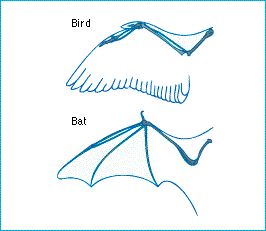Polyphyletic group

Polyphyletic groups are formed when two lineages convergently evolve similar character states.
Organisms classified into the same polyphyletic group share phenetic homoplasies as opposed to homologies. The key difference between paraphyletic and polyphyletic groups is that paraphyletic groups contain their common ancestor, whereas polyphyletic groups do not. Polyphyletic groups are recognized by pheneticists but not by cladists or evolutionary classifiers.
An example of a polyphyletic group is bats and birds: both have wings, but they have evolved separately.
| Next |



